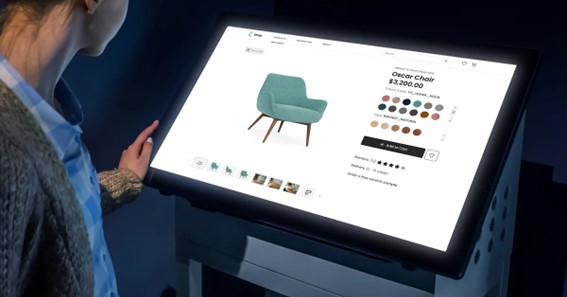In the world of furniture ecommerce, presenting products in the most captivating and accurate way is crucial for success. In recent years, 3D design and visualization have emerged as game-changers in this industry, offering businesses unique opportunities to showcase their products in immersive and realistic ways. This technology goes beyond traditional photography and opens up new avenues for engaging customers, streamlining the buying process, and enhancing overall customer satisfaction. In this article, we will explore the incredible power of 3D design and visualization and how it is reshaping the landscape of furniture ecommerce.
1. Immersive Shopping Experience with 3D Visualization
The traditional method of displaying furniture products through static images often leaves customers with doubts and uncertainties. They struggle to visualize how the piece might look in their own homes, leading to hesitation in making a purchase. However, with 3D visualization, a transformative shopping experience awaits customers.
In recent years, the emergence of 3D design and visualization, including advanced furniture visualizer tools, has revolutionized the industry. These cutting-edge technologies offer businesses unique opportunities to showcase their products in immersive and realistic ways.
• Unique Insight: 3D visualization allows customers to interact with furniture models, view them from different angles, and even place them in their own living spaces using augmented reality (AR) technology. This immersive experience bridges the gap between imagination and reality, empowering customers to make informed decisions confidently.
2. Redefining Personalization through Customization
Furniture is an expression of one’s personality and style, and customers now seek products that resonate with their individual tastes. 3D design has revolutionized the concept of customization, empowering buyers to tailor furniture according to their preferences.
- Unique Insight: Through interactive 3D configurators, customers can select colors, materials, sizes, and various design elements, visualizing their personalized furniture in real-time. This level of involvement not only strengthens the emotional connection between customers and products but also enhances brand loyalty.
3. Streamlining the Supply Chain and Inventory Management
One of the most significant challenges for furniture ecommerce businesses is managing inventory and supply chain logistics. Traditional photography necessitates capturing images of physical products, often leading to high costs and excessive storage space. However, 3D design and visualization offer a more efficient solution.
- Unique Insight: By creating 3D models of furniture products, businesses can avoid the need for extensive physical inventory. These digital assets can be easily updated or modified, reducing the cost and time associated with traditional product photography. Moreover, it enables businesses to swiftly adapt to changing trends and market demands.
4. Boosting Customer Confidence with Realism
Online furniture shopping can be a gamble for customers, as they are unable to physically inspect the product before purchase. This uncertainty can deter potential buyers. 3D visualization addresses this issue by providing unparalleled realism.
- Unique Insight: Advanced rendering techniques and high-quality textures in 3D visualization create furniture models that are indistinguishable from photographs of physical products. The level of realism instills confidence in customers, eradicating doubts about the appearance and quality of the product they are considering.
5. Minimizing Product Returns and Enhancing Satisfaction
Product returns are a significant challenge in the ecommerce industry, with furniture being no exception. The inconvenience of returning large items can lead to customer dissatisfaction and increased costs for businesses. 3D design and visualization have a profound impact on reducing return rates.
- Unique Insight: With 3D visualization, customers gain a comprehensive understanding of the product they intend to purchase. They can visualize its dimensions, design, and fit in their living spaces accurately. Consequently, customers make more informed decisions, reducing the likelihood of unsatisfactory purchases and, ultimately, minimizing return rates.
6. Navigating the Augmented Reality Frontier
As technology continues to evolve, so do the possibilities for the furniture ecommerce industry. Augmented reality (AR) is rapidly gaining popularity and changing how customers interact with products. To make the most of this trend, businesses are leveraging the best ecommerce personalization software integrated with 3D design. These innovative tools allow customers to virtually place furniture in their homes using their smartphones or tablets. By embracing this combination of AR and 3D design, businesses can create a seamless and enjoyable online furniture shopping experience, enhancing customer satisfaction and driving sales.
Conclusion
The power of 3D design and visualization in the furniture ecommerce industry cannot be underestimated. From providing an immersive shopping experience to reducing return rates, this technology has transformed how customers interact with products online. By leveraging 3D visualization, furniture businesses can create an unparalleled level of personalization, realism, and convenience, leading to higher customer satisfaction and increased sales. Embracing this innovative approach is not just a step towards success; it’s a leap into the future of furniture ecommerce.
Click Here – 6 Things to Consider When Hiring a Car Accident Attorney






